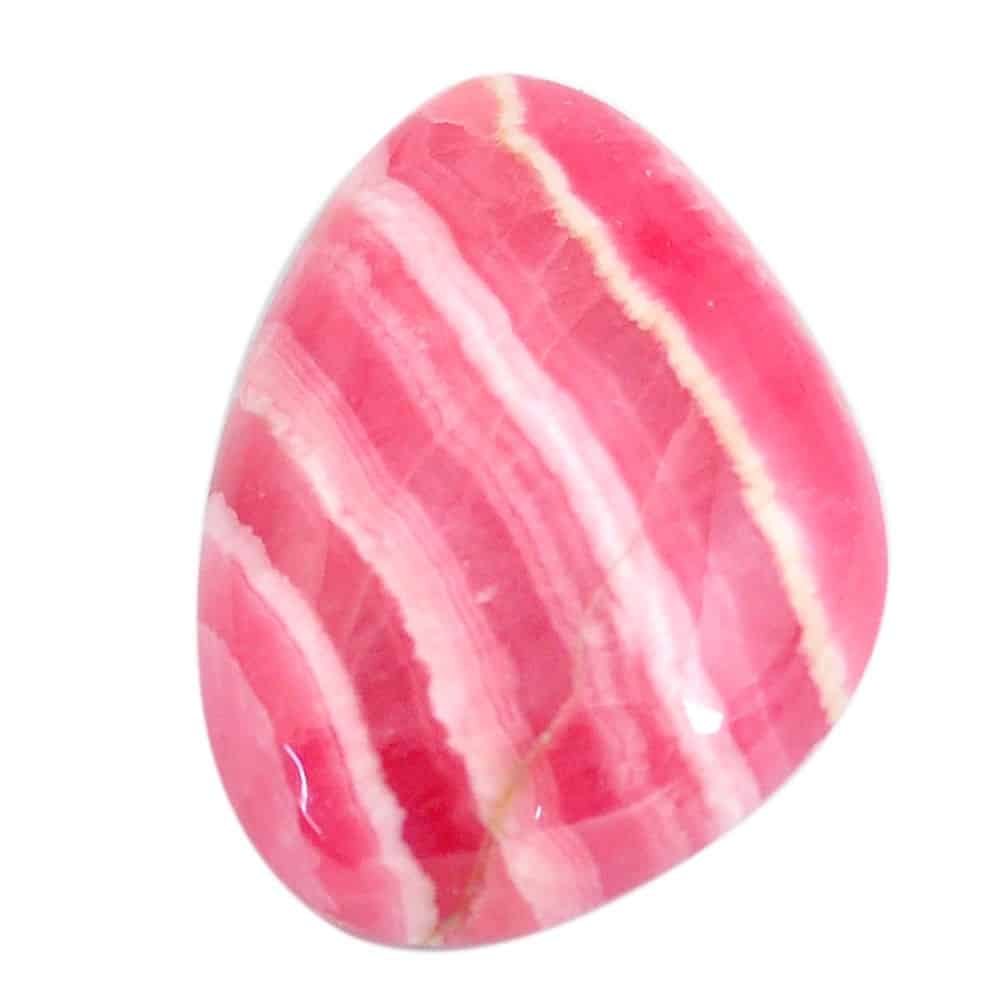
Inca Rose or Rhodochrosite is a variant of manganese carbonate (MnCO3).
The official name is Lord Crosite, and its etymology is “rhodokhros” which means “red color” in Greek.
However, recently, the popular name Inca Rose (Inca Rose) has become more common.
How does Inca Rose Look:
Common Inca roses are characterized by white stripes on a pink background. Inca roses mined in San Luis, Argentina, are often found in stalagmites reminiscent of stalactites, and when these stones are sliced, they look like pink annual rings or flowers.
When it comes to high-grade jewelry-class stones, there are also clear, deep pink stones, especially those from the Sweet Home Mine, Colorado, USA, which are famous for their beautiful rhombic crystals.
Benefits of Inca Rose or Rhodochrosite
Following are the benefits of using Inca rose:
- Increase your passion,
- recover from fatigue,
- vitality and energy
Healing effects of Inca Rose or Rhodochrosite:
In the field of stone healing, it may be used to help endocrine work to balance hormones and improve depressive symptoms.
However, these effects and benefits have not been proven in modern medicine.
Magical effects of Inca Rose or Rhodochrosite:
It is a stone like a mass of energy.
It is said to balance the mind, body and emotions, give vitality and motivation, and relieve physical and mental fatigue. It reminds me of stamina drinks, but isn’t it one of the most needed stones in the modern society of competition?
It is recommended for people who are doing their best, such as those who play sports, those who work busy every day, and housewives who have to take care of their families.
In addition, it is said that there is a suggestion that makes people sexy so that it is commonly called “the rose of passion”. It is thought that this is because the wave motion of the stone acts on the reproductive system and promotes hormone secretion. There is also a theory that it helps prevent aging because it gives energy to the body.
These effects can also have a positive effect on people who are prone to withdrawal and those who are prone to depression, and may form a positive posture. If you have a mental trauma, it is said that it will give you the courage to live by gently wrapping it in a protective film of love.
How to Cleanse Inca Rose:
Avoid prolonged sunbathing, washing with water, and purifying crude salt (discoloration).
Inca Rose has a strong tendency to release energy to the outside, so please charge it frequently.
Inca Rose corresponds to which chakra:
Chest, lower abdomen, coccyx
Directions corresponding to Inca Rose:
South, east, southeast, north
Properties of Inca Rose or Rhodochrosite
| Mineral name | Rhodochrosite (Ryomanganko) Rhodochrosite (rhodochrosite) |
|---|---|
| alias | Inca Rose |
| Misnomer | — |
| Main production areas | Argentina, America, Peru, Romania, Mexico, Russia, Japan, South Korea |
| Classification | Carbonate minerals |
| Chemical composition | MnCO 3 Manganese carbon, oxygen compound |
| Crystal system | Trigonal system |
| Crystal habit (shape) | Rhombus |
| Main shades | Pink |
| Streak color | White |
| hardness | 3.5-4 |
| cleavage | Complete in three directions |
| specific gravity | 3.5-3.7 |
| Refractive index | 1.59 ~ 1.82 |
| Similar stone non-made | Red rhodonite |
A type of calcite (calcite) group, it is a homoiconic image with similar characteristics to calcite. You can see this by comparing the calcite rhombus crystal with the rhodochrosite rhombus crystal.
Rhodonite and Rhodonite have similar names but similar appearances. Both have a pink background, with rhodonite featuring a black tree-like pattern and rhodonite featuring a white striped pattern. However, there are also transparent dark red stones on both sides, which makes it difficult to distinguish them.